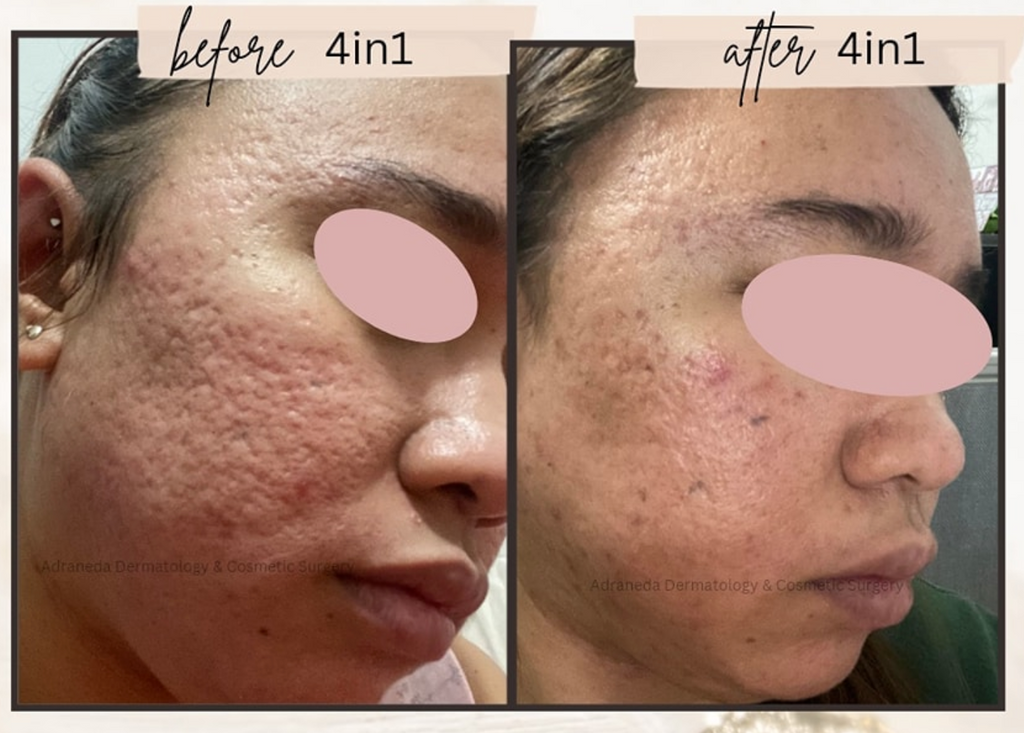Targeted Acne Scars Treatment: Accomplish Smooth, Even Complexion
Targeted Acne Scars Treatment: Accomplish Smooth, Even Complexion
Blog Article
Comprehending the Numerous Skin Disease and Reliable Treatment Options for Acne Marks
Acne marks represent a complex interaction of skin problem that substantially impact individuals' self-confidence and total skin wellness. Comprehending the unique types of acne marks-- hypertrophic and atrophic-- along with their underlying reasons, is critical for determining efficient treatment methods. Numerous restorative choices exist, varying from advanced skin-related treatments to natural remedies. Nevertheless, the efficiency of these treatments usually rests on customized evaluations by certified specialists. As we explore the landscape of acne mark management, it ends up being noticeable that the journey toward clearer skin might involve even more than just topical services.
Kinds of Acne Scars

In contrast, hypertrophic marks result from an overproduction of collagen throughout the recovery procedure, leading to elevated locations on the skin. These marks are often strong and can differ in shade, sometimes appearing red or darker than the bordering skin.
Comprehending these kinds of acne scars is important for creating an effective therapy strategy - acne treatment for sensitive skin. Alternatives might consist of chemical peels, laser therapy, microneedling, or dermal fillers, customized to the specific mark kind. A complete appointment with a skin specialist can aid identify the most appropriate treatment, taking right into account the person's skin kind, scar intensity, and general skin health
Reasons of Acne Scarring
Scarring takes place as an outcome of the body's all-natural recovery reaction to inflammation and injury triggered by acne sores. When acne kinds, it triggers an inflammatory action, causing the launch of different cytokines and growth variables that advertise healing. This process can in some cases lead to extreme tissue development or inadequate repair service, resulting in marks.
The main sources of acne scarring include the severity of the acne itself, duration of the sores, and specific skin types. Extreme inflammatory acne, such as nodules and cysts, is more probable to cause scarring because of deeper cells damages. In addition, improper handling of acne sores, such as selecting or squeezing, can aggravate tissue injury and inflammation, raising the chance of scarring.
Hereditary predisposition also plays a substantial role; individuals with a family background of scarring go to a greater danger. Skin type and color can affect mark formation, as darker skin tones may experience post-inflammatory hyperpigmentation, while lighter skin might establish atrophic scars.
Inevitably, comprehending these causes is vital in handling acne and alleviating the possibility for scarring.

Treatment Options for Scarring
Efficient treatment choices for acne scarring differ depending upon the kind and intensity of the marks. Normally categorized into atrophic, hypertrophic, and keloid marks, these conditions call for customized methods for optimal outcomes.
For atrophic marks, which are defined by a loss of cells, therapies such as chemical peels, microdermabrasion, and laser therapy are frequently used. These methods promote skin renewal and promote collagen manufacturing, therefore boosting skin texture. Subcision, a minimally intrusive treatment, can also be efficient by damaging up fibrous bands beneath the skin.
Keloid and hypertrophic scars can be a lot more testing to treat. Choices include corticosteroid injections to reduce swelling and flatten the marks. In many cases, cryotherapy or laser therapy may be advised to decrease their look.
Surgical alternatives are readily available for extreme scarring, where excision or skin grafting may be needed. It's vital for people to seek advice from a dermatologist to assess their particular mark type and review the most appropriate treatment strategy. Incorporating multiple therapies commonly yields the very best results, making certain that each individual's unique skin problem is resolved efficiently.
Natural Remedy and All-natural Solutions
Natural options and home solutions can provide an available approach for individuals looking for to boost the look of acne marks (acne scars). Various active ingredients discovered in the home kitchen have actually demonstrated potential advantages in enhancing skin structure and advertising recovery

One more efficient option is lemon juice, which works as an all-natural exfoliant and can lighten hyperpigmentation. Nonetheless, it must be utilized carefully, as it may cause photosensitivity. Oatmeal masks are additionally valuable; their mild peeling can assist eliminate dead skin cells while relaxing irritation.
Important oils, such as tea tree oil and lavender oil, can further sustain scar recovery as a result of their antimicrobial residential or commercial properties. It is crucial to perform a spot test before using any type of solution to make certain there are no negative responses. These all-natural services can be a complementary read the full info here technique in the trip to reduce acne marks.
Protecting Against Future Scarring
Adopting a proactive technique to skincare can substantially minimize the danger of creating future acne marks. Among the blog crucial strategies is to handle acne effectively as it occurs. This includes utilizing non-comedogenic skin care items and medications prescribed by skin specialists that target acne without aggravating the skin. Routine cleaning, peeling, and hydration can aid maintain skin health and avoid blocked pores.
Furthermore, staying clear of the lure to press or choose acne sores is essential, as this can result in inflammation and subsequent scarring. Instead, people need to concentrate on using topical therapies that promote healing and reduce swelling. Components such as salicylic acid, benzoyl peroxide, and retinoids are understood for their effectiveness in taking care of acne and reducing scars.
Sunlight security is another vital component; direct exposure to UV rays can dim scars and hinder recovery. As a result, utilizing a broad-spectrum sunscreen daily can minimize these impacts - acne treatment for sensitive skin.
Lastly, keeping a healthy diet abundant in antioxidants and remaining hydrated assistances skin regrowth. By executing these preventative procedures, individuals can dramatically reduce their risk of future scarring and advertise overall skin wellness.
Final Thought
In verdict, a thorough understanding of acne scars, encompassing both atrophic and hypertrophic kinds, is important for reliable treatment techniques. Appointment with a dermatologist continues to be essential to design individualized strategies that take into consideration individual skin kinds and mark extent, inevitably boosting the efficiency of mark monitoring strategies.
Acne marks stand for an intricate interaction of skin problems that dramatically influence people' self-worth and total skin wellness. The two key groups of acne marks are hypertrophic and atrophic scars. These scars are further identified right into 3 subtypes: ice choice scars, which are deep and narrow; boxcar marks, which are bigger and have distinct edges; and rolling scars, which create a wave-like look due to irregular skin structure.
A thorough consultation with a dermatologist can aid establish the most proper intervention, taking into account the individual's skin kind, link mark intensity, and total skin health.
Assessment with a skin doctor continues to be crucial to design personalized strategies that consider individual skin types and mark intensity, eventually improving the effectiveness of scar administration techniques.
Report this page